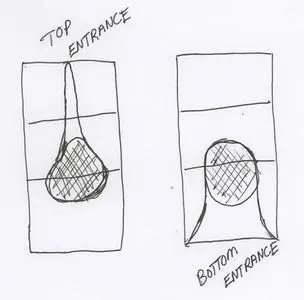Year 6 September - Cozy Hives and Winter Musings 🖊️

-Celebrating the hives’ splendid condition.
Feeling Good
- Laden enough for winter’s chill.
- Bees buzzing with vitality.
- A blissful absence of pests.
To prep for the cold, an entrance reducer found its place. The second one will snug in after the first snowfall.
A Glimpse Inside
Late in the Wyoming season, there’s not much hive-tending action.
- Warm days, chilly nights.
- Scant forage for busy bees.
- A frosty demise and the first snow are imminent
Usually, I steer clear of hive inspections this time around. Yet, running hives with top entrances prompted a curious peek into their late-season organization. I cracked open a three-story hive, and here’s the scoop:
Top Box:
- Moderately hefty.
- A few weightless frames nestled in the middle.
- Hosting scattered, sealed brood on those frames.
Middle Box:
- Nicely weighted.
- Three lightweight frames, with petite patches of sealed brood.
Bottom Box:
- Solidly loaded.
- The majority of brood in the top third of six frames.
- A honey-pollen blend enveloping and residing below the brood.
Examining the broodnest structure proved a bit tricky, given the small cell size plastic foundation and 11 frames snuggled in a box spaced at 1 1/4″.
A Hive Comparison

Quite distinct from the typical vertical hive with a bottom entrance:
- Elevation and compactness of open comb space differ.
- All three boxes boast open comb.
- Most stores reside beneath and snuggled up to the cluster.
- A scarcity of empty combs.
Does it carry weight? Hard to say. This insight stems from a lone hive, undisturbed so the bees could curate their abode their way.
Winter Wonderings
Snow and a frosty snap are on the horizon, prompting contemplation on winter and upper entrances.
Siberian beekeepers swear by a single upper entrance. Their studies suggest bees endure winter better with minimal drafts and higher carbon dioxide levels. Yet, questions linger:
- Could drifting snow infiltrate and fill a hive?
- What about moisture pooling on the bottom board?
- Might excessive moisture freeze atop the cover?
- Is an upper entrance too breezy for Wyoming’s gusty winds?
- Or perhaps, it’s too stifling.
Pondering the Future
Come spring, the distinction between a bottom and top entrance shall unfold. It’s when the bees break free from their snug cluster, venturing into brood-rearing. The hive’s interior conditions become paramount.
With lighter stores above the broodnest and some empty comb in all three boxes, these hives have essentially checkerboarded themselves. The plot thickens!
-Anticipating a toasty winter for the bees, D 🌨️🐝
